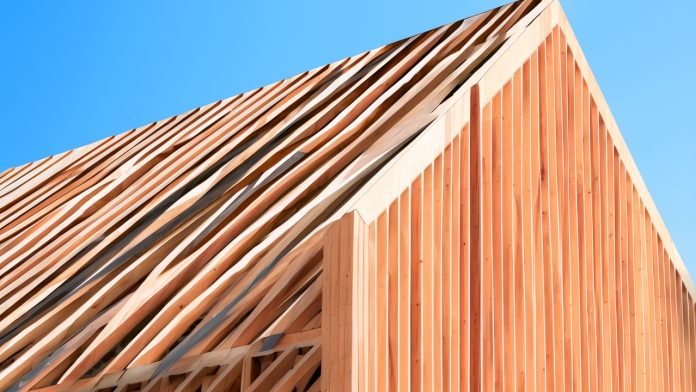A team of US researchers has made a breakthrough in genetically engineered wood that has the potential to transform sustainable construction.
Researchers at the University of Maryland have made a groundbreaking advancement in the field of sustainable building materials by genetically modifying poplar trees to produce high-performance, structural wood without the need for harmful chemicals or energy-intensive processing.
This innovative approach has the potential to revolutionise the construction industry by providing an eco-friendly alternative to traditional building materials like steel and concrete while also contributing to carbon sequestration efforts.
The challenge of sustainably engineered wood
Engineered wood, made from traditional wood, is often hailed as a renewable substitute for materials such as steel, cement, glass, and plastic.
Its ability to store carbon for extended periods while resisting deterioration makes it a valuable tool in reducing carbon emissions.
However, the process of creating engineered wood typically involves the use of volatile chemicals and significant energy, leading to considerable waste and diminishing its sustainability.
To overcome this challenge, the research team at the University of Maryland, led by Professors Yiping Qi and Liangbing Hu, sought to develop a method to produce genetically engineered wood without relying on chemicals or energy-intensive processing.
Genetic engineering: A game changer
The researchers utilised a technique called base editing to modify a key gene, 4CL1, in poplar trees.
This genetic modification resulted in a 12.8% reduction in lignin content—a compound that traditionally needs to be removed through chemical treatments to make wood suitable for engineering.
Remarkably, the genetically engineered poplars grew alongside unmodified trees in a greenhouse for six months, showing no differences in growth rates or structure.
Lignin, while essential for maintaining the structure of natural wood cells, poses a challenge when creating high-strength engineered wood.
Typically, lignin must be stripped away using chemicals, which contributes to environmental pollution and energy consumption.
By reducing lignin content through genetic engineering, the team has managed to sidestep these drawbacks, creating a more sustainable and efficient method for producing engineered wood.
Performance results
To evaluate the performance of the genetically engineered wood, the researchers created compressed wood samples—a process that involves soaking wood in water under a vacuum and then hot-pressing it to increase its density.
The results were impressive: the genetically modified compressed wood was denser and more than 1.5 times stronger than untreated natural wood. Its tensile strength was comparable to that of aluminium alloy 6061, a material commonly used in construction.
Moreover, the performance of the genetically engineered wood was on par with chemically treated wood, demonstrating that this new method could effectively replace traditional, less sustainable practices.
Implications for the future
This breakthrough in genetically engineered wood opens up new possibilities for producing building materials in a low-cost, environmentally friendly manner.
As the world seeks to combat climate change, innovations like this have the potential to play a crucial role by reducing the carbon footprint of the construction industry while contributing to long-term carbon sequestration.
The research marks a significant step forward in the quest for sustainable building materials, offering a glimpse into a future where genetically engineered wood could become a staple in eco-friendly construction practices.





